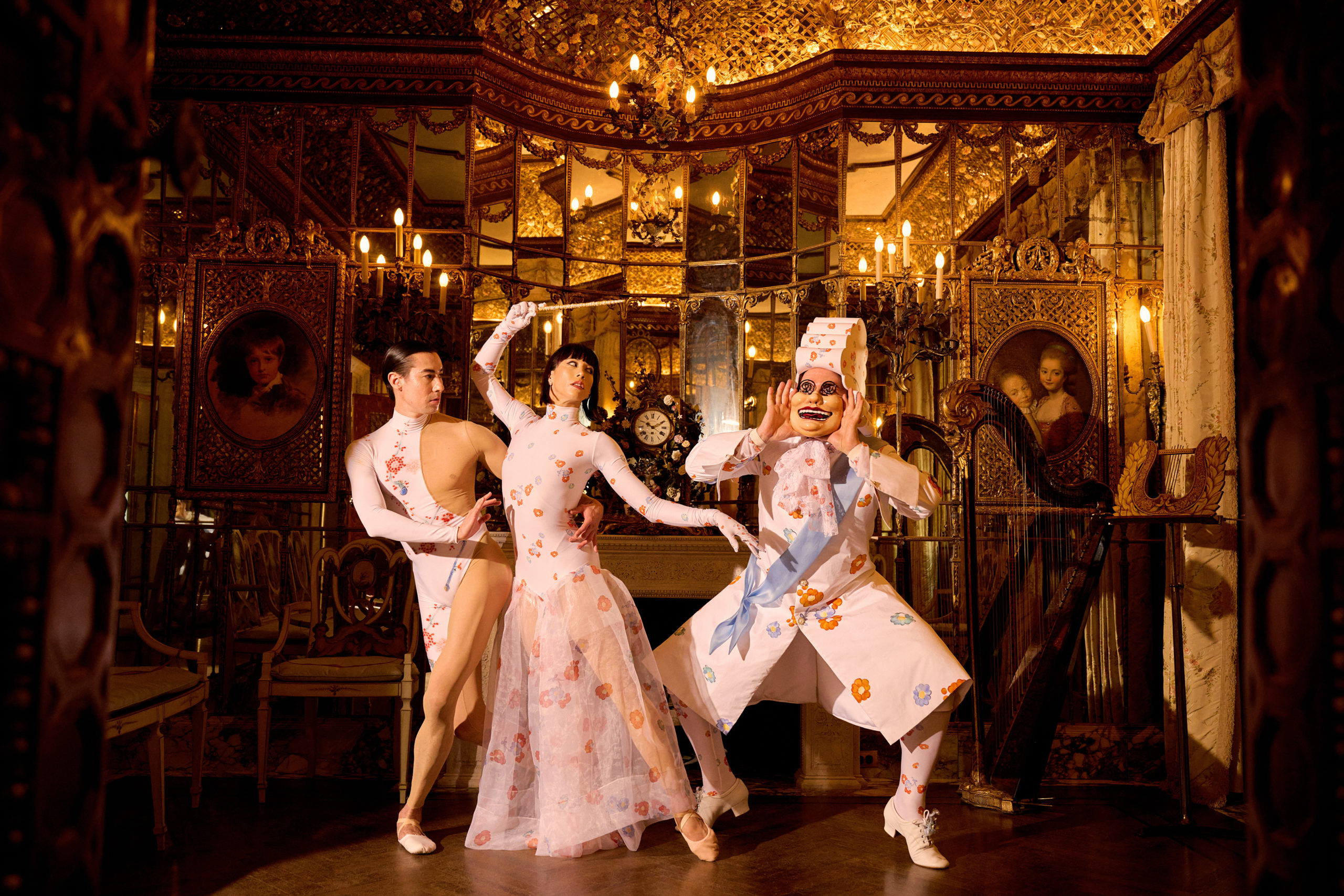Reimagining “Ballet des Porcelaines,” a Lost 18th-Century Divertissement
In 1739, a ballet pantomime called the Ballet des Porcelaines (also known as The Teapot Prince) was performed at the château de Morville near Paris. It was presented once more, in 1741, in the garden of the château before being virtually lost forever. Not much survived of the 15-minute divertissement—no sets, costumes or choreography—but the score (written by Nicolas Racot de Grandval) and the libretto are kept at the National Library of France in Paris.
Written by the comte de Caylus (1692–1765), Ballet des Porcelaines tells the story of a Chinese magician on a faraway island who turns its inhabitants, and any trespassers, into porcelain. A prince becomes one of his captives. His princess travels to the island to try to save him, stealing the magician’s wand and freeing everyone, while transforming the magician into a pagode, an 18th-century version of a porcelain bobblehead.
The story reflects Europeans’ infatuation with Chinese porcelain, a highly prized material at the time that was deemed “white gold.” For centuries, many Europeans tried to steal the technology for making porcelain from China.
Meredith Martin, associate professor of art history at New York University, has focused on 18th-century French art and architecture in her work, and also studies French interactions with Asia during that period. She became interested in resurrecting Ballet des Porcelaines after hearing about it from her friend Esther Bell, a curator at the Clark Art Institute, who had seen the libretto at the National Library of France.
“My inspiration was to do something that wasn’t the traditional scholarly path and to make the work more public, make it more meaningful,” says Martin.
An opportunity arose when Martin received a 2021 fellowship at NYU’s Center for Ballet and the Arts (CBA). It was there that she connected with Phil Chan, a choreographer and co-founder of Final Bow for Yellowface, an organization dedicated to eliminating racist and offensive portrayals of Asians in ballet. Given his experience, Chan proved to be the perfect collaborator Martin was looking for.

A Ballet for Today
In revisiting the ballet, Martin and Chan had an opportunity to create a new version of the story more appropriate for today’s diverse audiences.
“It was fun to work within the constraints of what it actually was originally,” says Chan. “We had the libretto and the score. The ‘rules of the game’ were that I had to use what the libretto says matching with the music. But how, then, could I bend the work outside of those rules? How could I interpret the libretto in a slightly different way for a contemporary audience?”
In the updated version, Chan and Martin reworked the character of the Chinese magician into a European porcelain collector modeled after Augustus the Strong, a real king who amassed 29,000 porcelain objects during the 1700s. Chan also pulled together an Asian artistic team that included Xin Ying, a principal at Martha Graham Dance Company who worked as his assistant choreographer and also danced the princess’s solo for a CBA-hosted event. Costumes were designed by Harriet Jung, while Dongsok Shin and Leah Gale Nelson served as co-music directors. Composer Sugar Vendil also helped add some new music to fill parts of the score.
Chan says the choreography features a “hybrid blend” of contemporary dance with Baroque movement (with the help of Baroque expert Patricia Beaman), along with Chinese classical and fan dancing.
On the Road
The new Ballet des Porcelaines premiered in December at The Metropolitan Museum of Art in New York with New York City Ballet soloists Daniel Applebaum and Georgina Pazcoguin performing the roles of the prince and princess, while Broadway star Tyler Hanes portrayed the porcelain collector. It will be performed March 18–19 at Princeton University and, as part of Oakland Ballet’s Dancing Moons Festival, March 24–26 and April 1–2. The ballet then embarks on a European tour, including to the Capodimonte in Naples and the Palazzo Grassi in Venice.
“[The tour] is mostly to museums and institutions where there are porcelain collections,” explains Martin. “They all responded very enthusiastically.”
Chan describes the process of revisiting the Ballet des Porcelaines as “deeply generative for the future.”
“Yes, reboots, remakes, reimaginings are important, but also looking at the larger ecosystem, we need to make space, especially for artists of color, to tell new stories,” says Chan. “It’s lovely to look to the past as a way to look forward, but we also need to be making new work. We need to have a balance of both.”




